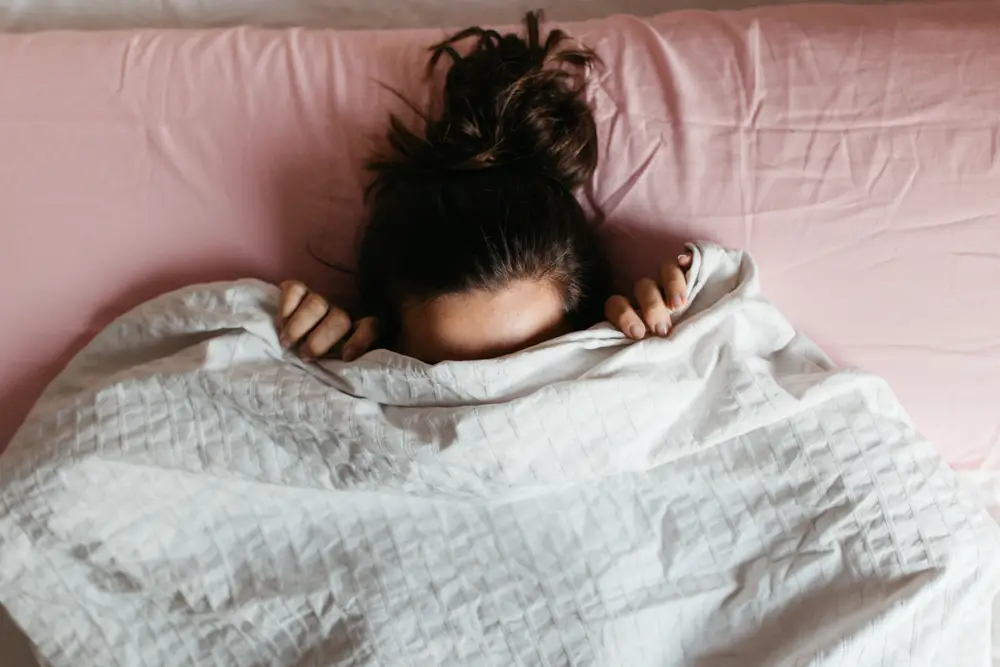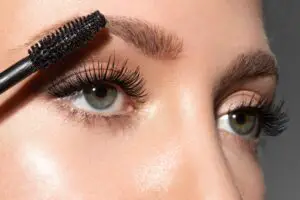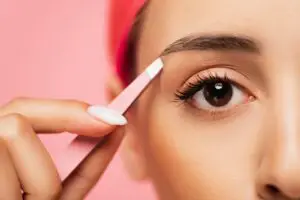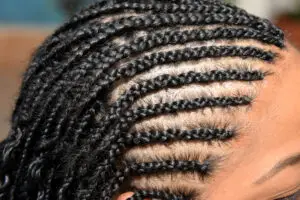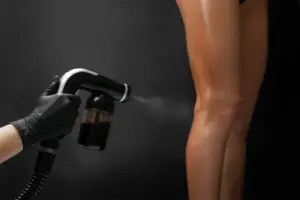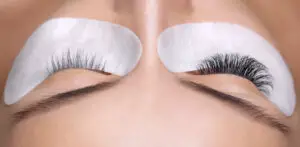Waking up with a messy and unmanageable head of hair is a common issue for many people. This phenomenon, known as bed head, can be frustrating and time-consuming to fix in the morning.
However, there are several techniques that can help prevent bed head and facilitate a smoother morning routine.
One effective way to avoid bed head is by using silk bedding, particularly silk pillowcases. Due to its smooth texture, silk creates less friction between the hair and the pillow, reducing the chance of tangled and unruly hair in the morning. This luxurious material not only benefits your hair but also contributes to a more peaceful sleep.
Another important factor in preventing bed head is ensuring that your hair is fully dry before going to bed. Wet hair tends to tangle and snarl during sleep, so it’s advisable to use a hairdryer or let your hair air dry a few hours before bedtime.
By implementing these preventive measures, you can wake up feeling confident and ready to face the day with well-groomed hair.
Understanding Bed Head
Bed head is a common phenomenon that occurs when one wakes up with messy, unruly hair. Often characterised by frizz, cowlicks, tangles, and curls, bed head can be a frustrating experience, especially when trying to maintain a neat and polished appearance.
The primary cause of bed head is friction between the hair and pillowcase during sleep. As you toss and turn throughout the night, your hair rubs against the fabric, causing it to become tangled and frizzy.
Additionally, the natural oils and moisture in your hair can contribute to this condition, as they are absorbed by the pillowcase and can lead to dryness and further tangles.
Another factor that can exacerbate bed head is the way your hair is styled before sleep. If you go to bed with wet or damp hair, it is more likely to become knotted and frizzy, as the hair strands are more pliable and prone to misshapen curls and cowlicks when wet.
Moreover, certain hairstyles, such as tight ponytails or buns, can also contribute to the development of bed head, as they place tension on the hair and can lead to unsightly kinks and tangles upon waking up.
Understanding the factors that cause bed head is crucial for finding effective ways to prevent it. By taking proactive measures like sleeping on silk pillowcases, drying hair thoroughly before bed, and adopting suitable nighttime hair routines, you can minimise the occurrence of bed head and wake up with a more manageable and sleek hairstyle.
Preventing Bed Head: Key Tactics
Pillowcase Choices
One of the most effective ways to prevent bed head is to choose the right pillowcase material. Silk pillowcases have been known to reduce friction between the hair and the pillow, helping to prevent tangles and bed head.
Unlike cotton pillowcases, silk allows hair to glide smoothly, reducing the risk of breakage and frizz. Additionally, silk provides natural moisture retention, which can benefit hair health.
Hair Care Rituals
Regular hair care routines play a significant role in preventing bed head. It is essential to ensure hair is completely dry before going to bed to prevent hair from sticking at odd angles as it dries.
Brushing hair gently before sleep can also help distribute natural oils evenly throughout the hair, reducing the chances of waking up with a tangled mess.
Using a leave-in conditioner or a light hair oil can keep hair moisturised and manageable, preventing breakage and frizz.
Appropriate Hairstyling
Selecting the right hairstyle for bedtime can help minimise bed head. For individuals with long hair, a top knot can be an excellent option to prevent tangles by keeping hair secure and away from the face.
To achieve this, loop hair into itself on top of the head rather than using a hairband, which can cause creases. Alternatively, wearing a bandana, hair wrap, or silk cap can protect hair from friction, trapping natural oils, and preserving the styling while sleeping.
Those with short hair should consider getting a haircut that is easy to manage to reduce their chances of developing bed head.
By combining these techniques, individuals can minimise the chances of waking up with bed head, promoting hair health and maintaining their desired hairstyle throughput the night.
Exploring Hair Types
Prevention Strategies for Short Hair
To prevent bed head with short hair, it is important to avoid sleeping with wet hair. Wet hair is more likely to dry in awkward positions, creating the unwanted bed head look. Instead, ensure the hair is dry before going to bed.
One helpful method for short hair is to use a silk pillowcase. A silk pillowcase can reduce the friction between the hair and the pillow, resulting in less bed head in the morning.
In addition, brushing the hair before bedtime may help distribute natural oils evenly and remove any tangles, thus minimising bed head. For those who require extra hold, consider using bobby pins to secure the hair in place while sleeping.
Prevention Strategies for Long Hair
For individuals with long hair, similar to short hair, it is crucial to ensure the hair is dry before sleep. Damp or wet hair may lead to a higher likelihood of bed head.
To prevent bed head in long hair, it is advised to secure the hair in a loose style, such as a braid or low ponytail, before going to bed. This can prevent tangles and possible breakage. Utilising bobby pins can also help secure specific sections of hair, reducing the chance of bed head occurring.
Remember, the key to preventing bed head with both short and long hair types is prioritising dry hair, using protective materials such as silk pillowcases, and securing the hair before sleep.
Nighttime Routines for Bed Head Prevention
Establishing a nighttime routine can effectively help in preventing bed head. Incorporating certain activities and using specific products can contribute to maintaining a neat and tidy hairstyle while you sleep. Here are a few suggestions to include in your nighttime hair care routine.
Begin your routine with a shower to remove any dirt and oil from your hair. Gently comb through any tangles and apply a lightweight leave-in conditioner or coconut oil to provide your hair with added moisture.
If you are prone to waking up with a cowlick, you can use a small amount of pomade or hair cream on the problematic area before going to bed, which will help keep it in place.
One mustn’t miss using a humidifier in the bedroom, as it helps maintain an appropriate level of humidity in the air. This can ease dryness and minimise static, which results in fewer frizz and tangles. Plus, your skin and overall health will benefit from the improved air quality.
Pay attention to your choice of pillowcases, as the material can affect your hair. It is advisable to switch to silk or satin pillowcases, as they create less friction, preventing hair breakage and tangles. These smooth surfaces also reduce the chance of developing a cowlick overnight.
If you have longer hair, consider securing it in braids or twists before going to bed. This not only prevents tangles but can also create beautiful, heatless waves for the next day. An alternative is to wrap it up in a silk or satin scarf to further reduce friction against your pillow.
For those concerned about creating unnecessary heat damage, avoid using a hair dryer or blow dryer as often as possible. Instead, let your hair air dry or use a cotton t-shirt to absorb excess moisture more gently than a towel.
If you must blow-dry your hair, always remember to use a heat protectant and keep the dryer at a reasonable distance from your hair. This way, you can limit damage caused by intense heat.
Following these steps before bedtime can help prevent bed head, allowing you to wake up with manageable and healthier hair.

I’m Jennifer a beauty and wellness expert. I believe in promoting a sustainable and healthy lifestyle from within. Helping people feel good is my passion; whether it’s teaching yoga or offering skincare advice.

